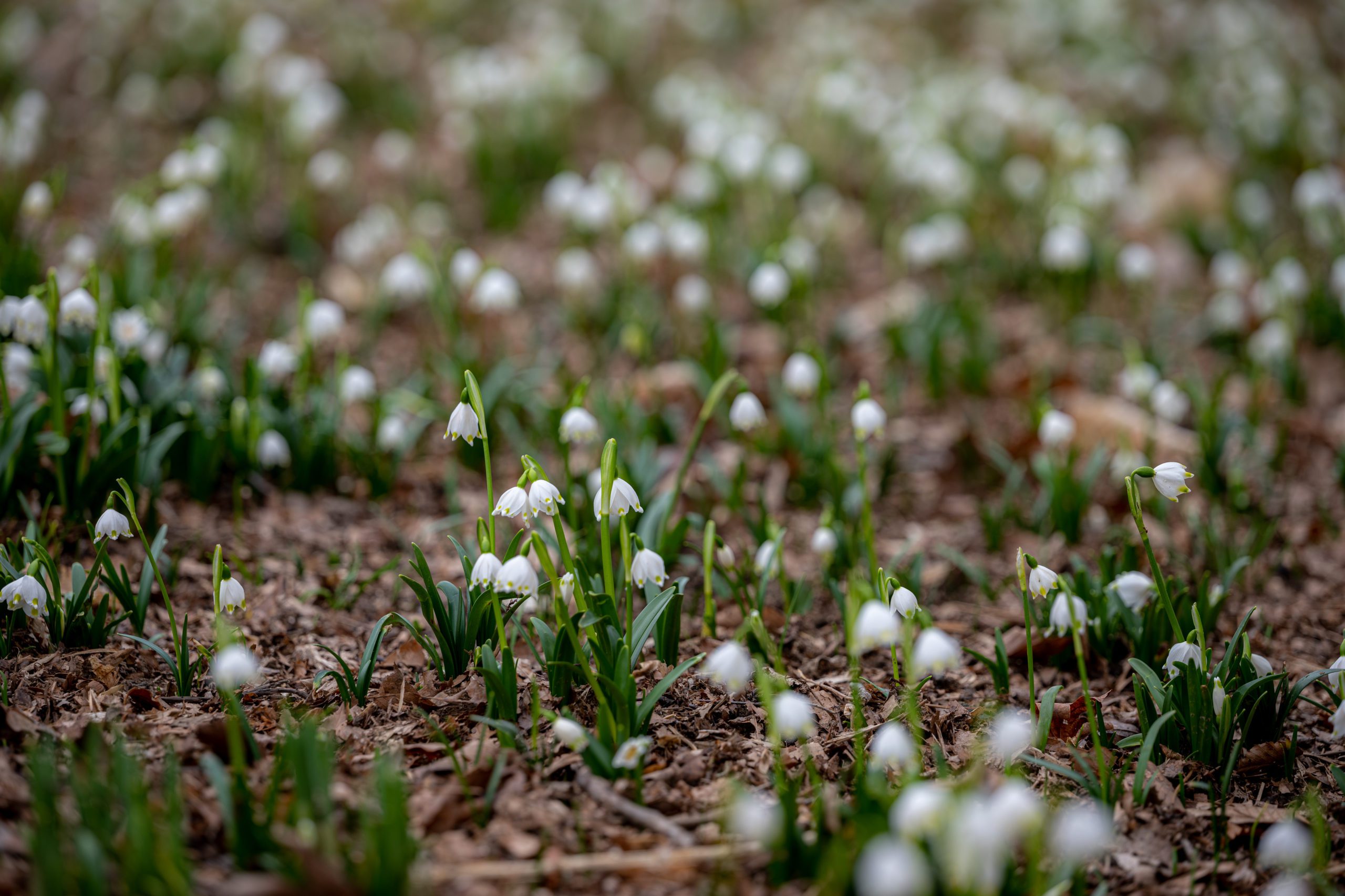
The upcoming Bank to Bend event on March 11, 2023, celebrates the snowdrops on the March Bank, which also features winter aconites, snowflakes, and crocuses—and this year, because of the mild weather we are already seeing daffodils, scilla, and squill popping through the leaf litter. One of the questions that comes up often but that I am always a little hesitant to answer is, “How many bulbs are there in the March Bank?” I always say millions, with my fingers crossed behind my back because, after all, I have not counted them.
I finally decided to resolve this nagging doubt. Using Google Earth, I plotted the area of the March Bank, following the general boundaries of the area that we used for its restoration, but decreased them slightly. I drew a line from the Scroll Garden to the 1750 House, then over to Magnolia Bend, but I excluded the Glade. The area enclosed by this measurement is 6.9 acres, or 300,564 square feet.
Looking at one square foot of the March Bank, I chose an estimate of 10 bulbs per square foot. This number is very conservative—some areas have as many as 40–50 bulbs in a square foot, whereas others have only a few or no bulbs, including the paths and watercourses. So, 10 is probably a fair guess.
Next, I multiplied 300,564 (the number of square feet) by 10 (the average number of bulbs per square foot) and got 3,005,640 bulbs. Even if my assumptions are off by half, it would still be more than a million bulbs. I propose that saying the March Bank has “millions of bulbs” is well within the margin of error.
Please join us on March 9 to see these beautiful bulbs for yourself on a guided or self-guided walk.
Post by Chris Strand, Charles F. Montgomery Director and CEO of Winterthur